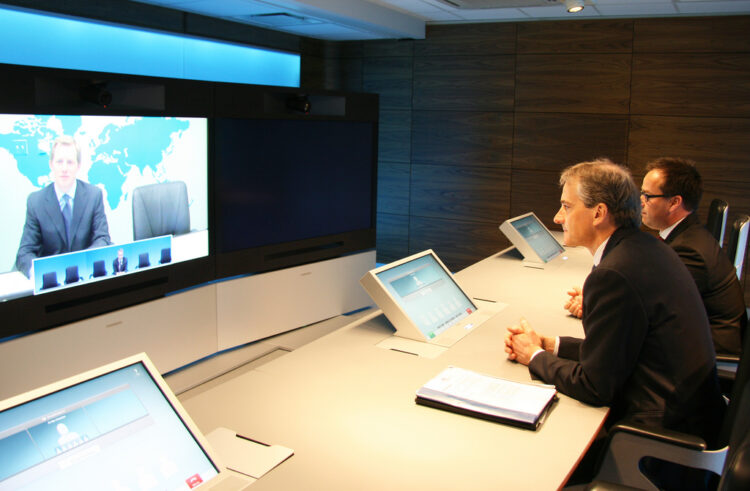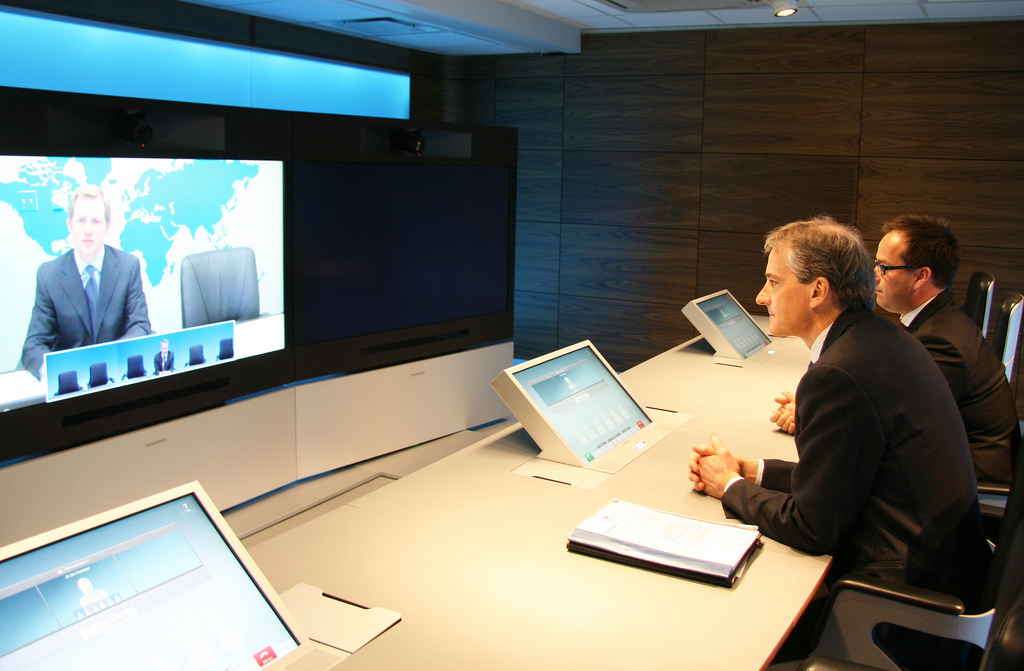Since the Industrial Revolution, commerce in America has been based on a chain of supply and demand: who was best equipped to provide a product to the customer who needed it? Until 2003, when everything was changed by a new revolution: the Digital Revolution.
The eCommerce boom of the early 2000s fundamentally changed business and customer service in ways we’re still figuring out today, but Tom Goodwin, a vice president of strategy and innovation at Havas Media, made a very interesting point in an editorial for TechCrunch. Your product isn’t necessarily what wins you customers in cyberspace. Goodwin argues that in the age of the Internet, your interface is king.
Videoconferencing is another new product of the growth of eCommerce. On the surface, it may seem like a life-saver: a new way for a small business trying to save on travel costs to meet face-to-face with potential customers. As we’ve learned more about customer interaction in the digital age, however, the drawbacks become apparent: a study by Strategy&Business found that we process information and interpersonal interactions differently – and less effectively – in video conferences than we do in person. Goodwin’s suggestion holds true for meeting with clients, just like it does for an online marketplace: the quality of the interface will make or break your client interactions.
What Makes a Good Video Interface?
A 2012 Wainhouse Research paper on effective video conferencing coined the term “a have-it-your-way” experience to describe what customers expect from an online interface. They demand fast, fluid, and customizable performance from the interface they’re interacting with.
In a videoconference, as far as your client is concerned, you are your interface. The videoconferencing service you select to conduct your business will be the most important hurdle to overcome in establishing effective customer management. Here are the primary things to look for in your service:
- Fast, fluid connection
- Easy access and easy scheduling
- Flexibility and compatibility
Fast and Fluid Connections
Older videoconferencing networks require desktop software and specific hardware, usually a video bridge, to manage calls with three or more participants. Fortunately, the newer and more streamlined services have moved away from clunky, buggy video bridges and based their services online. Look for a service that offers browser-based videoconferencing: this means your customers won’t need to download any new software to interact with you. All you need to do is send them a link, and they can connect directly to a virtual meeting-room or a private conversation. Browser-based services reduce wait time, since there’s no software to boot and connect.
Cloud-based videoconferencing will also make your interactions smoother. In a cloud-based service, the host provides an online video bridge, which eases the strain on both your network and your client’s. It reduces the risk of calls being dropped and helps keep video streaming high-quality and smooth.
Easy Access and Easy Scheduling
Forbes.com listed near-constant accessibility as one of the most important aspects of good customer management. Because browser-based and cloud-based services are quick and easy to connect to, they make access and scheduling easy and intuitive.
Many newer cloud-based apps can connect to a calendar app, streamlining the process of scheduling calls with a client and making you more accessible for them. Intuitive interfaces decrease the barriers between you and your customer during videoconferences, helping defeat that “unnatural” feel. Familiarize yourself with the interface and be on the lookout for those helpful scheduling tools that make you more accessible to your customer when you’re setting up a videoconferencing system
Flexibility and Compatibility
One of the most important parts of providing your customer with a “have-it-your-way” experience is flexibility. Look for videoconferencing apps that are network agnostic or system agnostic: this means the app is specifically designed to run seamlessly on any type of network and any operating system. Browser-based services are the easiest way around potential software conflicts since, as we previously mentioned, they don’t require and downloads on the customer’s end. Many cloud-based systems also have mobile versions, which are a great way to increase your customer’s flexibility. Being able to connect via mobile apps like Blue Jeans for client servicing make you that much more available to your client by letting them contact you on the go. You can also find services with third-party support: even if your client is using a different videoconferencing service, you can still link them into your conversation seamlessly.
In Conclusion
In the age of the Internet, we’ve never had more access to potential clients…but their attention has never been harder to keep. Picking the right videoconferencing service can go a long way to building up a connection with those long-distance clients, giving them easy, intuitive access to you and your services. Don’t get caught fighting a clunky, difficult interface to effectively manage and serve your customers. They’re called videoconferencing services for a reason: let them serve you!
Image credit: CC by Utenriksdepartementet UD




